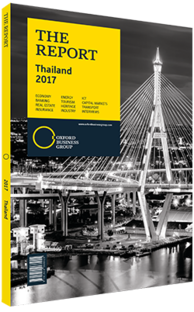Hiroshige Seko, Minister of Economy, Trade and Industry of Japan: Interview

Interview: Hiroshige Seko
What is the current level of trade and investment between Japan and Thailand?
HIROSHIGE SEKO: Exports to Japan account for 9.6% of Thailand’s overall exports, the third largest after the US and China, and imports from Japan to Thailand make up 16% of overall imports, the second largest after China. Japan is by far the largest provider of direct investment in Thailand, accounting for approximately $66.3bn (as of 2015), or 35% of the balance of overall foreign direct investment. Trade and investment ties continue to grow, withstanding the 1997-98 Asian currency crisis and severe floods in 2011. Currently, approximately 5000 Japanese companies operate in Thailand, and the country maintains a high level of bilateral trade and investment with Japan compared to other countries.
Thailand is a prime location for regional investment. It is surrounded by the rapidly growing economies of the four emerging nations of South-east Asia: Cambodia, Laos, Myanmar and Vietnam. Thailand lies at the crossroads of the East-West and North-South economic corridors, with both airports and seaports functioning as hubs that cover the region. In addition, Thailand has laid strong foundations for further economic development, with robust supply chains developed around the industrial clusters of leading, global Japanese companies. If Thailand is able to fully and steadily realise its development potential, Japanese industries with business in Thailand will also prosper, creating further opportunities for bilateral trade and investment.
How will the Regional Comprehensive Economic Partnership (RCEP) further promote free trade?
SEKO: The RCEP, which is negotiated among 16 countries, will create a vast economic area, accounting for around half of the global population and some 30% of global GDP. The RCEP is expected to play an important role in promoting further trade and investment liberalisation, as well as deepen regional economic integration in East Asia. For the RCEP to play this role, it is important to make a partnership model that is inclusive and innovation oriented. It should facilitate participation of small and medium-sized enterprises (SMEs) and local enterprises in East Asian value chains, while encouraging innovation and entrepreneurship. To achieve this, the RCEP must introduce not only market access in trade in goods and trade in services and investment, but also introduce regulations regarding e-commerce, intellectual property and Customs procedures.
At a special ministerial meeting on April 8, 2017 Japan proposed the Japan-ASEAN Cooperation Package to Realise RCEP, which received strong support. We will work together on the details of the package, including support for SMEs, creating new industries, and developing institutional systems and human resources.
In which ways are the Japanese government and private sector aiding Thailand’s start-up culture?
SEKO: Our government supports Japanese and Thai companies who are working together in order to encourage innovation. We would also like to partner with the Thai government, to further support startups. During my visit to Thailand in September 2016, I attended a signing ceremony for a memorandum aimed at bolstering cooperation between Japanese entrepreneurs and Thai start-ups. The Japanese Ministry of Economy, Trade and Industry will assist Japanese groups in developing policy proposals to the Thai government, as well as connect Japanese and Thai start-ups with large companies at our embassy pitch event. I know new businesses are already being created in Thailand, so I expect those successes will lead to further entrepreneurial growth, driving an even stronger partnership.
The Japanese government has launched a new financial assistance programme for trial projects, aimed at creating new industries through cooperation between Japanese and ASEAN local companies. I am looking forward to the development and implementation of projects that help enhance Thai industries even further.
You have reached the limit of premium articles you can view for free.
Choose from the options below to purchase print or digital editions of our Reports. You can also purchase a website subscription giving you unlimited access to all of our Reports online for 12 months.
If you have already purchased this Report or have a website subscription, please login to continue.

